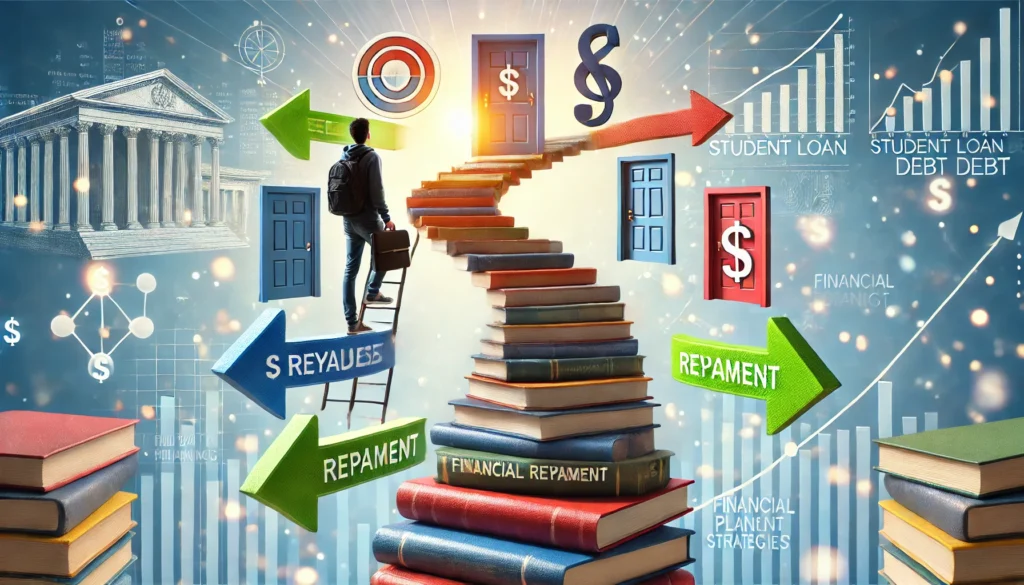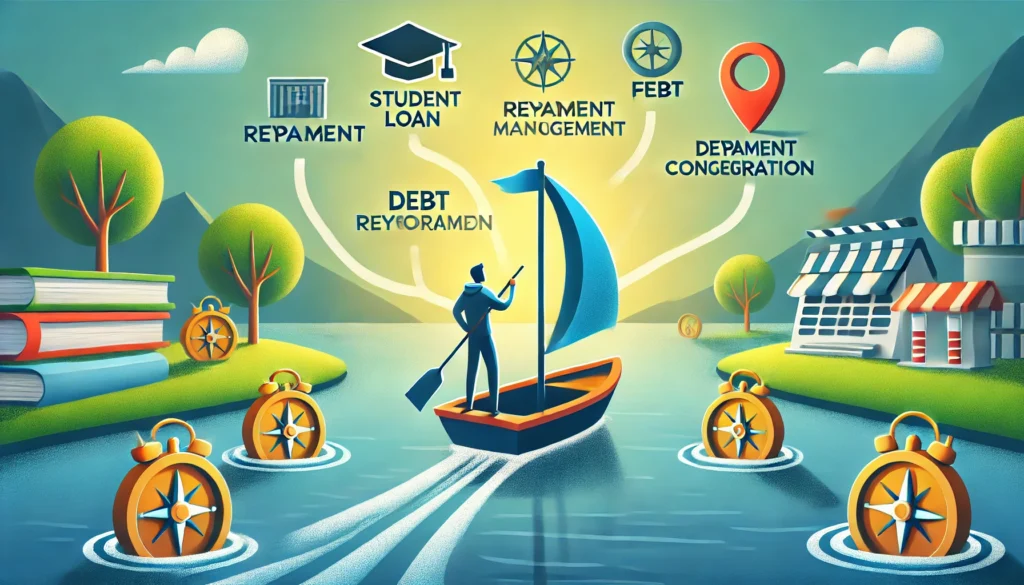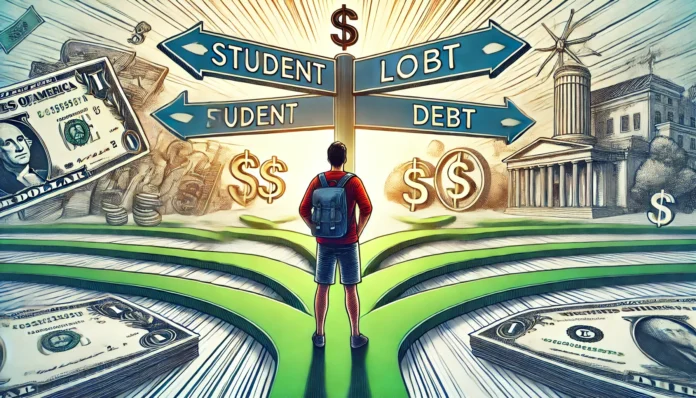Understanding Debt Resolution Federal Student Aid
Managing student loan debt can be a daunting challenge for many borrowers, especially those facing financial hardships. Debt resolution federal student aid programs exist to help students navigate repayment challenges while avoiding default. These programs provide solutions for borrowers struggling with repayment and help them regain financial stability. Understanding the intricacies of debt resolution, including how the debt resolution group operates, can be crucial for student borrowers seeking long-term financial relief.
You may also like: Federal Direct Consolidation Loan: A Smart Strategy to Simplify Student Debt
The federal government offers various options through the debt management and collections system, which aims to provide support to struggling borrowers. Borrowers should be aware of available solutions such as loan rehabilitation, income-driven repayment plans, and federal loan forgiveness programs. These programs exist to ensure that repayment is manageable and that borrowers do not default on their FSA debt obligations. Exploring these solutions can help borrowers make informed financial decisions that align with their personal financial goals.

The Role of the Debt Resolution Group in Student Loan Management
The debt resolution group plays a pivotal role in assisting borrowers with defaulted federal student loans. This group functions as a mediator between borrowers and loan servicers, offering solutions that prevent severe credit damage. Many borrowers who struggle with their student loans often feel overwhelmed, but working with the debt resolution group can provide structured pathways toward resolving debt challenges.
One primary service provided by the debt resolution group is loan rehabilitation, a program designed to help borrowers restore their federal loans to good standing. Through rehabilitation, borrowers agree to make a series of affordable payments, after which their loan is removed from default status. This process can significantly improve a borrower’s credit history and future borrowing potential. Another key function of this group is to provide guidance on repayment plans and other assistance programs available through the debt management and collections system.

The Debt Management and Collections System: How It Works
The debt management and collections system (DMCS) is an essential part of the federal student aid framework, helping borrowers understand their repayment options and navigate debt collection processes. This system ensures that borrowers in default can work toward restoring their loans while preventing unnecessary financial hardship.
When a federal student loan enters default, it is transferred to the debt management and collections system, where collection agencies and the debt resolution group step in to assist. Borrowers have several options to resolve their defaulted loans, including loan rehabilitation, consolidation, and settlement. The DMCS ensures that borrowers have access to information about these programs and facilitates communication with loan servicers. This system also enforces collection efforts, including wage garnishment and tax refund offsets, for borrowers who do not take proactive steps to resolve their FSA debt.

Understanding FSA Debt and Its Impact on Borrowers
FSA debt, or Federal Student Aid debt, refers to the loans issued through federal student aid programs, including Direct Loans, Perkins Loans, and PLUS Loans. These loans provide access to higher education but also require responsible repayment strategies to avoid financial distress. Many borrowers struggle to keep up with payments due to economic hardships, unexpected expenses, or employment instability.
Falling behind on FSA debt payments can lead to significant consequences, including damage to credit scores, wage garnishment, and loss of eligibility for future federal aid. Borrowers must be proactive in exploring solutions such as income-driven repayment plans, deferment, and forbearance. The debt resolution federal student aid programs offer multiple ways to manage loan repayment, ensuring that borrowers can avoid default while maintaining financial stability.
Debt Settlement vs. Loan Rehabilitation: Choosing the Right Path
Borrowers facing financial hardship may consider debt settlement as an option for resolving outstanding loans. Debt settlement involves negotiating with lenders to pay a reduced amount of the total balance owed. However, this approach can negatively impact credit scores and future borrowing opportunities. Loan rehabilitation, on the other hand, provides a more structured way to restore a loan to good standing without the same credit damage as settlement.
One major difference between these two approaches is that loan rehabilitation removes the default status from a borrower’s credit report, whereas debt settlement remains as a negative mark. The debt management and collections system encourages borrowers to pursue rehabilitation before considering settlement. Those unsure about which path to take should consult financial advisors or work with the debt resolution group to find the best solution.
Exploring Income-Driven Repayment Plans for Debt Management
Income-driven repayment (IDR) plans are among the most effective solutions for borrowers struggling with FSA debt. These plans adjust monthly payments based on income and family size, ensuring that loan payments remain affordable. Options such as Pay As You Earn (PAYE), Revised Pay As You Earn (REPAYE), and Income-Based Repayment (IBR) provide significant relief for those with high debt-to-income ratios.
One advantage of IDR plans is that they prevent default by making payments more manageable. Additionally, after 20 or 25 years of qualifying payments, any remaining balance may be forgiven. However, borrowers must recertify their income annually to remain eligible for these plans. By enrolling in an IDR plan, borrowers can avoid default while keeping their financial obligations under control.
The Long-Term Implications of Managing Student Loan Debt
Successfully managing student loan debt requires a proactive approach and a clear understanding of available options. The long-term impact of student loan repayment affects credit scores, future borrowing potential, and financial well-being. Borrowers who actively engage with the debt resolution federal student aid programs can prevent long-term credit damage and build a solid financial foundation.
Working with the debt resolution group or utilizing the debt management and collections system ensures that borrowers receive the guidance necessary to make informed financial decisions. Whether through loan rehabilitation, consolidation, or income-driven repayment plans, taking proactive steps toward repayment can lead to financial stability and peace of mind.
Frequently Asked Questions (FAQ)
How does debt resolution federal student aid impact borrowers with delinquent loans?
Debt resolution federal student aid programs provide borrowers with options to manage and resolve delinquent or defaulted student loans. These programs can help prevent wage garnishment and tax refund offsets by offering repayment plans based on income levels. Borrowers can also rehabilitate their loans through structured repayment programs, which may remove default status from their credit history. Additionally, debt resolution federal student aid initiatives may include forgiveness options for borrowers in public service careers or those with severe financial hardships. Understanding these options can help borrowers regain control over their finances and improve their long-term financial health.
What role does the debt resolution group play in managing student loan debt?
The debt resolution group serves as a resource for borrowers facing difficulties with student loan repayment. This group provides guidance on available repayment options, including income-driven repayment plans and loan consolidation. Additionally, the debt resolution group can assist borrowers in understanding how defaulted loans affect credit scores and future borrowing opportunities. By working directly with federal loan servicers, this group helps individuals navigate the complexities of loan resolution and debt forgiveness programs. Seeking assistance from the debt resolution group can be a crucial step in regaining financial stability and avoiding long-term consequences of defaulted loans.
How does the debt management and collections system handle defaulted student loans?
The debt management and collections system is responsible for recovering federal student loans that have entered default status. This system facilitates communication between borrowers and collection agencies to establish repayment plans or settlement agreements. Borrowers can use the debt management and collections system to explore rehabilitation programs that may remove the default status from their credit report. Additionally, this system provides guidance on the consequences of loan default, such as wage garnishment and tax refund seizure. Understanding how the debt management and collections system operates allows borrowers to take proactive steps to resolve their defaulted loans.
What are the consequences of ignoring fsa debt repayment obligations?
Ignoring fsa debt can lead to severe financial and legal consequences, including damage to credit scores and increased loan balances due to accrued interest and penalties. Borrowers may face wage garnishment, tax refund interception, and legal action if they fail to address their student loan obligations. Additionally, defaulting on fsa debt can limit access to further federal student aid, making it difficult to return to school for additional education. Borrowers who ignore repayment responsibilities may also experience difficulties securing housing or employment due to negative credit impacts. Addressing fsa debt proactively through repayment plans or debt resolution programs is essential for financial stability.
How can borrowers remove a defaulted student loan from their credit report?
Borrowers can remove defaulted student loans from their credit reports through loan rehabilitation or consolidation. Loan rehabilitation requires making a series of consecutive, on-time payments to restore the loan to good standing. Once rehabilitation is complete, the default status is removed, though late payments may still appear on credit reports. Consolidation, on the other hand, allows borrowers to combine defaulted loans into a new loan, immediately removing the default but maintaining the prior negative history. Understanding these options and choosing the best strategy for credit recovery can help borrowers rebuild their financial profiles after default.
How does the debt resolution group assist in wage garnishment situations?
The debt resolution group provides borrowers with options to stop or prevent wage garnishment due to student loan default. By guiding individuals through loan rehabilitation or consolidation, the group helps borrowers regain control over their repayment status. Additionally, they offer legal insights into how wage garnishment works and how borrowers can negotiate repayment plans with collection agencies. Some borrowers may also qualify for hardship exemptions, which the debt resolution group can help navigate. Taking action through this group can prevent further financial strain and restore financial security.
What repayment options are available through the debt management and collections system?
The debt management and collections system provides multiple repayment options for borrowers struggling with federal student loans. Income-driven repayment plans allow borrowers to make payments based on their earnings, reducing financial strain. Loan rehabilitation programs provide a structured pathway to remove default status after making consecutive on-time payments. Settlement options may be available for borrowers who can make lump-sum payments to resolve outstanding balances. Understanding the various repayment choices within the debt management and collections system ensures borrowers select the best strategy for their financial situation.
How does fsa debt impact eligibility for future financial aid?
Fsa debt in default status can make borrowers ineligible for additional federal student aid, limiting their ability to return to school. To regain eligibility, borrowers must rehabilitate or consolidate their loans to remove the default status. Some financial aid programs also require proof of satisfactory repayment arrangements before granting new loans or grants. Additionally, high outstanding balances on fsa debt may affect a borrower’s debt-to-income ratio, which can influence private loan approvals. Proactively managing fsa debt through structured repayment plans ensures continued access to financial aid opportunities.
Can the debt resolution group help borrowers reduce their total student loan balance?
While the debt resolution group does not directly reduce loan balances, they can assist borrowers in finding programs that offer partial or full loan forgiveness. Federal programs like Public Service Loan Forgiveness (PSLF) or Teacher Loan Forgiveness provide options for reducing outstanding debt under specific conditions. Additionally, some borrowers may qualify for settlement offers through the debt resolution group, though these are less common. Understanding how forgiveness programs work and seeking guidance from the debt resolution group can lead to significant reductions in long-term student loan obligations. Exploring all available options ensures borrowers make informed financial decisions.
How can borrowers avoid dealing with the debt management and collections system?
Borrowers can avoid involvement with the debt management and collections system by staying current on their federal student loan payments. Enrolling in income-driven repayment plans can make monthly payments more manageable, preventing delinquency. Setting up automatic payments reduces the risk of missed payments, helping borrowers maintain good standing. Additionally, communicating with loan servicers at the first sign of financial difficulty can lead to alternative repayment solutions before loans enter default. Proactive financial planning and responsible borrowing help borrowers avoid the negative consequences associated with the debt management and collections system.
Final Thoughts: Navigating Debt Resolution for a Strong Financial Future
Debt resolution for federal student aid is a crucial aspect of financial planning for borrowers. Understanding the roles of the debt resolution group, the debt management and collections system, and the implications of FSA debt allows borrowers to make informed choices about their student loans. By exploring options such as loan rehabilitation, income-driven repayment plans, and proactive financial management, borrowers can work toward a debt-free future.
Making informed decisions about student loan repayment can prevent long-term financial hardships and improve overall financial health. Borrowers should take advantage of available resources, consult financial professionals, and remain proactive in managing their debt. By utilizing the right strategies, individuals can successfully navigate their student loan journey and achieve financial stability.
student loan debt relief, financial planning for graduates, managing student debt, loan repayment options, credit score impact, debt relief strategies, financial literacy, student loan repayment strategies, loan rehabilitation programs, debt settlement alternatives, financial stability planning, credit score rebuilding, income-driven repayment plans, loan consolidation options, smart financial decisions, federal student loan assistance, student loan forgiveness programs, debt negotiation services, responsible borrowing, understanding financial aid
Further Reading:
Student Loan Debt Settlement: What You Need to Know
Does Debt Consolidation Hurt Your Credit?
Does Debt Consolidation Hurt Your Credit?
The information provided in this article is for general informational purposes only and is not intended to constitute financial, investment, legal, tax, or other professional advice. The content should not be relied upon for making any financial or investment decisions. Readers are encouraged to consult with licensed professionals, such as financial advisors, attorneys, or tax experts, to obtain personalized advice tailored to their individual circumstances. The author and publisher disclaim any liability for any actions taken or not taken based on the information provided in this article.





